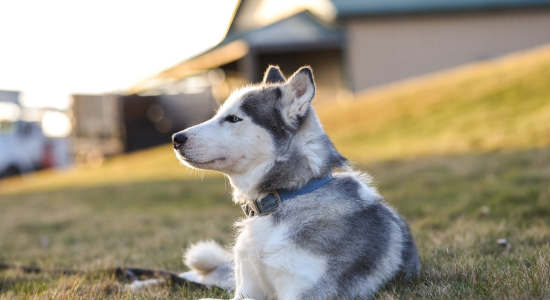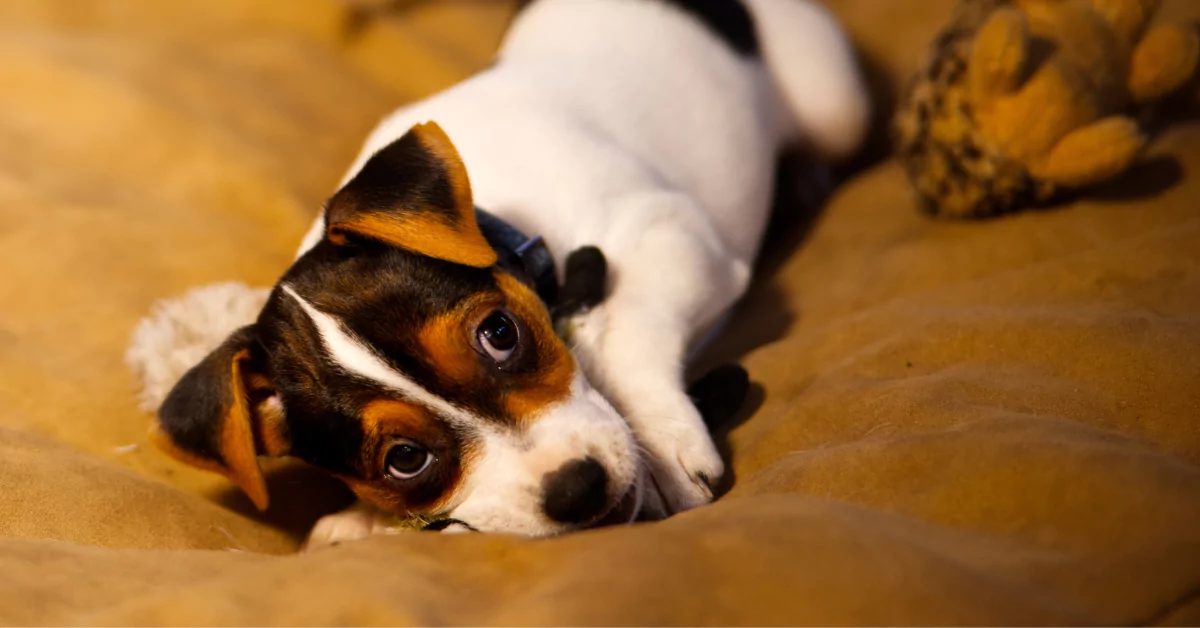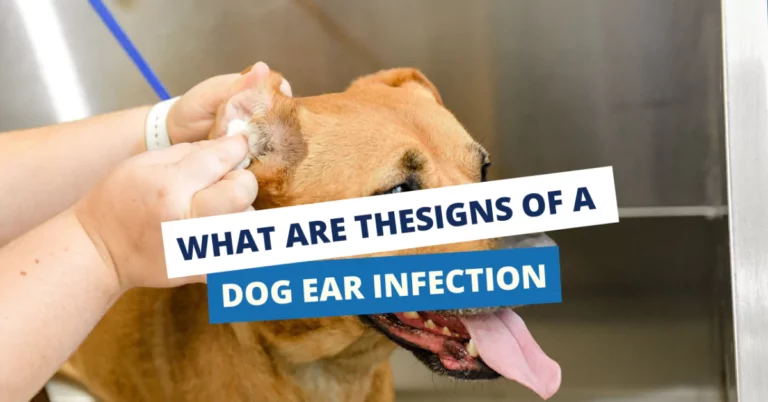Kennel Nose in Dogs: What Is It and How to Treat It?
If you have ever noticed your dog’s nose looking red, raw, or scraped, you may have wondered what caused it. One possible explanation is the kennel nose. It affects many dogs in kennels or other unfamiliar environments.
Kennel nose is not a severe health problem, but it can be uncomfortable and unsightly for your furry friend.
Also Read: Dog Sneezing and Coughing: Causes, Symptoms, and Treatment
What Is Kennel Nose?
Kennel nose is a term for minor abrasions on a dog’s nose after rubbing it against a surface. It is often caused by anxiety or stress. Some dogs may try to escape or dig their way out by using their nose, while others may find comfort in repetitive scratching.
Kennel’s nose can be recognized, treated, and prevented.
What is Kennel Nose When it Comes to Dogs?

Kennel nose is not a specific disease but a friction-related injury. It can affect any dog breed, age, or size, but it is more common in dogs with short fur on their noses. The skin on the nose is susceptible and delicate and can easily get damaged by rough surfaces.
Kennel nose can also occur at home if your dog rubs their nose on the carpet, floor, bedding, or grass.
What Causes Kennel Nose In Dogs?
Several factors can contribute to kennel noses in dogs, but the main one is stress. Dogs can get anxious when exposed to new or unfamiliar situations. It can happen when they are separated from their owners.
Stress can trigger various dog behaviors, such as hiding, barking, chewing, or digging. Some of these behaviors can involve rubbing their nose on objects or surfaces, leading to a kennel nose.
Change In Environment
For our canine pals, a shift in routine can be very stressful. It can exaggerate typical canine behaviors, whether your dog is being boarded or pet-sat in a new environment. One frequently seen behavior is hiding and guarding one’s food.
Many puppies may exhibit this behavior in excess while under stress. A dog may sense the urge to defend their resources even if kept separately from other dogs.
Rubbing Their Nose Vigorously
Dogs may hastily hide any food they obtain to protect their resources, frequently burrowing their bowls and treats behind any available bedding. They often violently rub their noses on the bedding when they bury their meals, which can cause severe nose irritation if done frequently.
Your Dog Is Stressed Or Stuck In Their Kennel
Another reason why dogs may rub their noses is to try to escape or relieve their boredom. Some dogs may not cope with being confined to a kennel or crate for long periods, mainly if they are not used to it. They may try to dig their way out by scraping their nose against the metal bars.
Also Read: Dog Sneezing and Coughing: Causes, Symptoms, and Treatment
What Does Kennel Nose Look Like?
If you suspect your dog has a kennel nose, you will probably observe a red, inflamed snout. Kennel nose frequently manifests as tissue irritation around the nose and surrounding skin or as an apparent wound on the nose’s surface. These wounds are generally minor and superficial, but they have the potential to bleed if sufficiently agitated.
Some signs of kennel nose in dogs are:
- Redness
- Swelling
- Scabs
- Crusts
- Hair loss
- Dryness
- Cracks
Kennel Nose Treatment In Dogs
Kennel nose in dogs is usually not severe and can heal independently with time and proper care. However, there are some steps you can take to help your dog recover faster and prevent infection or complications.
E-collar
First, you should prevent your dog from further injuring its nose by rubbing or licking it. You can use an e-collar (a cone or Elizabethan collar) to restrict your dog’s access to its nose. It will allow the wound to heal without interference and reduce the risk of infection.
Cleaning The Area
Next, clean and dry the affected area with a mild antiseptic solution, such as chlorhexidine or povidone-iodine. You can use a cotton ball or a gauze pad to gently wipe the nose and remove dirt, debris, or crusts. Do this once or twice a day until the wound heals.
Antibiotics (if needed)
Sometimes, your dog may need antibiotics to treat or prevent a bacterial infection. It can happen if the wound is deep, large, or dirty.
Kennel Nose in Dogs At Home
If your dog has a kennel nose, you should make some changes at home to help them heal and prevent recurrence.
Here are some tips to follow:
Clean Your Dog’s Face Regularly
You should keep your dog’s face clean and dry, especially after they eat or drink. You can use a damp cloth or a baby wipe to gently wipe their nose and mouth and remove any food particles. You should also check their nose for any signs of injury.
Crate Training Your Dog
You should consider crate training if your dog is prone to kennel noses due to stress or anxiety. Crate training teaches your dog to associate their crate with positive experiences, such as treats, toys, or praise.
This way, your dog will learn to see their crate as a safe place rather than a punishment or a trap.
Over-The-Counter Meds
You can also use over-the-counter petroleum jelly, coconut oil, and aloe vera gel to soothe and moisturize your dog’s nose. These products can help prevent dryness and cracking and promote healing.
Will My Dog’s Nose Heal Normally After Kennel Nose?
Most dogs with kennel noses will recover fully and have no lasting effects on their nose. However, some dogs may have permanent scars or pigment changes on their nose, depending on the severity of the injury and the healing process.
Can You Prevent Kennel Nose?
Kennel nose in dogs can be prevented by avoiding the factors that cause it in the first place.
Here are some practical ways to avoid kennel noses in dogs:
Avoid Separation Anxiety in Dogs
Separation anxiety is a common cause of stress and anxiety in dogs, especially when left alone for long periods or in unfamiliar places. It can cause various behavioral problems in dogs, such as barking.
To prevent separation anxiety in dogs, you should:
- Provide your dog with plenty of exercise and mental stimulation
- Establish a routine and schedule for your dog
- Gradually accustom your dog to being alone for short periods
- Leave your dog with some toys or treats to keep them busy
- Use calming products such as pheromones, music, or aromatherapy
Treat Skin Issues Timely
Some dogs may have underlying skin issues that make them more prone to kennel noses, such as allergies, infections, or parasites. These conditions can cause itching, inflammation, or irritation.
To prevent skin issues in dogs, you should:
- Avoid foods that may trigger allergies in your dog
- Use hypoallergenic shampoos and grooming products
- Brush your dog regularly to remove loose hair and dirt
- Check your dog for fleas, ticks, or mites
- Treat any skin problems as soon as possible
Ensure Proper Facial Hygiene
Another way to prevent kennel noses in dogs is to keep their face clean and healthy. Some dogs may have facial features that make them more susceptible to dirt accumulation or irritation on their nose, such as wrinkles.
To ensure proper facial hygiene in dogs, you should:
- Trim any excess hair around their eyes, ears, mouth, and nose
- Clean any folds or creases
- Dry their nose with a soft towel
- Apply a pet-safe moisturizer or balm to prevent cracking
Use Non-allergic Dog Food
Some dogs may develop kennel noses due to food allergies, which can cause itching and inflammation in their nose. To prevent this, you should feed your dog a high-quality, balanced diet that suits their needs and preferences.
Also Read: Is Catnip Safe for Dogs? Effects & Benefits
Frequent Nose Examination
Finally, you should check your dog’s nose regularly for any signs of injury or infection, especially if they have a history of kennel noses. You should inspect their nose for redness, swelling, scabs, or cracks.
If you notice any of these symptoms, you should treat them immediately and prevent your dog from further damaging their nose.
How Long Does It Take For Kennel Nose To Heal?
The healing time for kennel noses in dogs depends on several factors, such as the severity of the injury, the presence of infection, the treatment method, and the individual dog.
Generally, kennel nose can heal within a few days to a few weeks, depending on how well you care for your dog’s nose. However, some dogs may take longer to heal or have permanent scars or pigment changes on their nose.
Frequently Asked Questions (FAQs)
Is it OK to Put Vaseline on a Dog’s Nose?
Vaseline is a petroleum-based product that can help moisturize and protect your dog’s nose. However, using Vaseline on your dog’s nose is not recommended for several reasons:
- Vaseline can clog your dog’s pores and cause acne or dermatitis.
- Vaseline can attract dirt and dust, making your dog’s nose dirtier.
- Vaseline can be toxic if ingested by your dog in large amounts.
Can I put Neosporin on My Dog’s Nose?
Neosporin is an antibiotic ointment that can help prevent infection and promote the healing of minor wounds. However, using Neosporin on your dog’s nose is not advisable for several reasons:
- Neosporin can cause allergic reactions or irritation in some dogs.
- If ingested by your dog in large amounts, Neosporin can be harmful.
- Neosporin can interfere with the natural healing process of your dog’s skin.
Can I Put Coconut Oil on a Dog’s Nose?
Coconut oil is a natural product that benefits dogs’ health and well-being. It can help moisturize and soothe your dog’s nose and fight bacteria and fungi that may cause infection.
However, coconut oil is not a substitute for proper veterinary care and should be used cautiously:
- Coconut oil can cause allergic reactions or diarrhea in some dogs.
- Coconut oil can be high in calories and fat and may cause weight gain or pancreatitis in some dogs.
- Coconut oil can be messy and greasy and may stain your furniture or clothes.
Can I Put Aloe Vera Gel on My Dog’s Nose?
Aloe vera gel is a natural product that benefits dogs’ health and well-being. It can help moisturize and heal your dog’s nose, reducing inflammation and pain.
However, aloe vera gel is not a substitute for proper veterinary care and should be used with caution:
- Aloe vera gel can cause allergic reactions or irritation in some dogs.
- Aloe vera gel can be toxic if ingested by your dog in large amounts.
- Aloe vera gel can be sticky and hard to remove from your dog’s fur.






